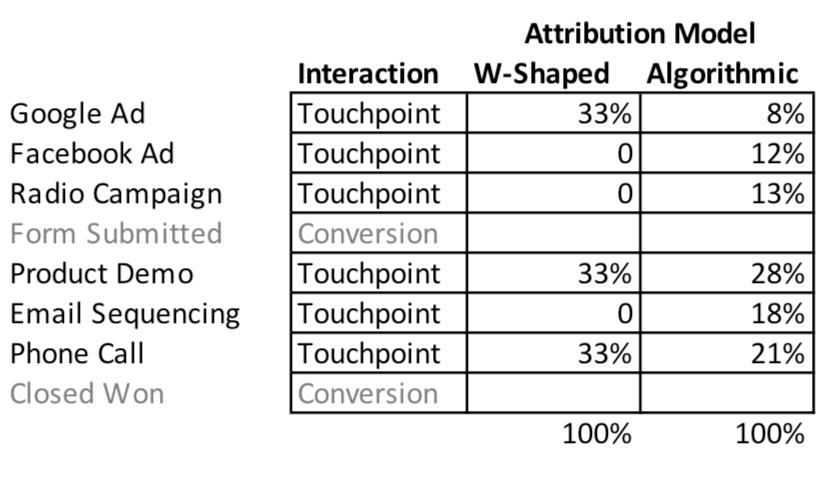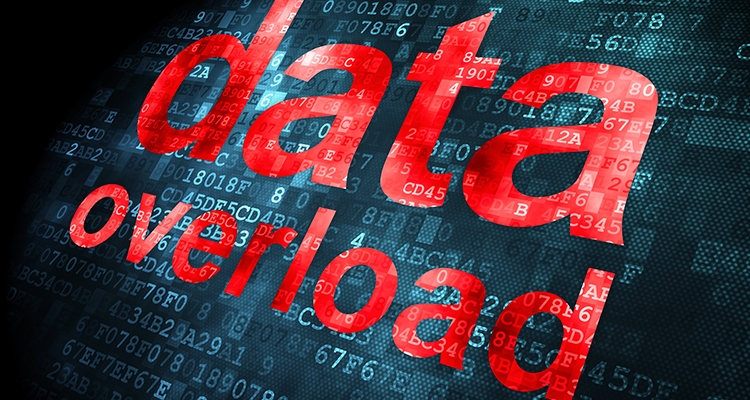
- Blog
- Jul 31, 2019
- By Lucas Sommer
B2B sales cycles are often quite long and unique when compared to an impulse driven consumer product (like apparel). Historically, these B2B cycles were tough to measure even with traditional methodology – let alone attribution modeling.
Thankfully, digital technologies and developments in software can give key insights into these complex conversion paths and help marketers (and salespeople) get more sales. In this article, we will be discussing how and why to use attribution in B2B sales cycles.
LeadsRx can. Our system effectively tracks prospects as they engage with your company through both online and offline channels, tying that data together into a complete algorithmic attribution solution and giving you a top-down view of the buying journey of your customers — wherever it takes them.
Selecting the Right Attribution Model
One of the most important marketing decisions that a company will make is what attribution model they use. 77% of marketing professionals don’t know if they are using the right attribution model. Understanding the complete path that a customer takes on their way to buying your product can be used to inform so many different aspects of your business.
Marketing teams can use this information to refine marketing campaigns to get more qualified leads. Your sales team will have more context in their discussions with prospects to convert more leads to sales. The product team can use information gleaned through attribution to figure out what is most important to the people that ultimately end up becoming paying customers.
This creates one big happy well oiled sales and marketing team!
Choosing the Wrong Attribution Model
Choosing the wrong attribution model not only limits those insights, but it can also point you in the wrong direction. For instance, if you used the last-click attribution model in a long B2B sales process, which attributes all or a majority of the credit for a conversion to the last piece of content that a customer clicked on, you would miss out on critical insights.
If your B2B lead finally signs up for your software product online, is it accurate to say the “last touchpoint” should receive credit for delivering that conversion? No, because previous to that conversion there has been hundreds of emails, content reading, product demos and phone calls to get to this point.
If you don’t attribute credit to all steps in the path you can’t make decisions about how to improve the path.
Attribution answers critical marketing questions. What content did they interact with throughout their journey? Which pieces of content saw more engagement than others? Did they visit your sales page directly after engaging with specific pieces? Those interactions are critical for informing business strategies.
Modern B2B companies tend to lean more heavily toward algorithmic attribution models because the measure the whole journey and the learn along the way.
To understand further, let’s deep-dive into what algorithmic attribution is and why it has become the go-to model for most B2B companies.
What is B2B Algorithmic Attribution?
An algorithmic attribution model uses data, machine learning, and internal rulesets to determine which ads, content, and engagements receive the most credit for the interaction.
So, instead of credit being unfairly weighted toward specific pieces of content, an algorithmic model examines their journey and attempts to assign credit, based on data, to different pieces of content in the funnel. A 2016 report from AdRoll found that algorithmic attribution was viewed by marketers as the most effective attribution model.
Here’s an example of how an algorithmic attribution model might assign credit to different touchpoints throughout the funnel, as compared to a W-shaped model:

The difference in outcomes from these two approaches would be vast.
Algorithmic attribution models use machine learning to collect, analyze, and use all of your data in its accreditation process. These should include all touchpoints, online and offline, that into all deals, both won and lost.
Understanding where B2B deals fall apart is perhaps the most critical asset that algorithmic attribution brings to the table. Your ability to connect specific engagements or content with lost deals can help you to refine your approach.
Because algorithmic attribution models change over time, the more they analyze your data the more your attribution model becomes custom-developed for your specific customer journey. The ability to refine its approach based on experience through machine learning ensures that not only is your attribution more accurate initially, but it improves over time.
Algorithmic Attribution is Perfect for B2B Companies
The B2B buying cycle has gone through a rapid transformation in the last decade. Increasingly, B2B buyers are more reliant on pre-existing relationships than they had been in previous decades. Much of their decision-making process comes down to who can deliver the right piece of content at the right time.
That is exactly what algorithmic attribution is so adept at determining — how well you are delivering content when the customer needs to hear it. You receive a full picture of the customer journey that even more advanced models like W-shaped attribution and full-path attribution just aren’t able to provide.
Modern B2B buying cycles are long and complex:
Source: B2B International
Attributing Conversions and Outcomes With an Algorithm
How do you attribute all of these different activities to outcomes? It’s a complex process. W-shaped attribution and full path attribution might be better than models like first and last touch, but they still fail to provide a clear picture of why your customers made the decisions that they did. You should seek to understand what influenced their decisions, not just know what they interacted with.
Algorithmic attribution drives understanding of all of the different stages in a customer journey and lets us know what content and channels are performing at each point in the funnel.
It provides insight into the effectiveness of both your marketing and sales teams. Taken further, you can see how your customer success and support teams are affecting your ability to convert upsales and generate more revenue from existing customers.
Algorithmic attribution might upend beliefs that you have held about your marketing and buying processes for some time. Maybe you were weighting initial interactions with a prospect too heavily when really your ability to schedule a demo with your prospects was the driving force behind positive interactions that resulted in sales.
Maybe customers that interacted with a specific ebook at a particular point in the journey are converting at a way higher level than prospects that did not — both of those would be critical insights that might call for wholesale changes in the way that you walk prospects through their buying decision.
How Do I Know Algorithmic Attribution is Right For Me?
Now that you understand the benefits of algorithmic attribution, it’s time for us to look at whether it might be the right time for your company to make the switch.
Changing the way you attribute sales and conversions is never a small change. It often means leaving old data behind. Data that you have relied on for years and that can be a scary prospect.
But the truth is that the longer your sales cycle is, the more likely it is that a rule-based attribution model is feeding you bad data. Or at least data that is not giving you the full picture and therefore causing you to make inefficient decisions.
Naturally, companies with longer sales cycles are in a position to benefit more from algorithmic attribution. The same may be true for companies that have high sales revenue, even if they don’t have as long of a sales cycle, simply due to the costs and benefits of making the switch.
But making that switch is a big decision. Changing the way you attribute outcomes will invariably lead to changes in the way that you allocate your budget, hire team members, and prioritize projects. It’s not something that any mid-sized company can change overnight. Preparation for that change is critical.
It’s difficult to quantify all of the incremental improvements that you will see over time from an algorithmic machine learning model. There are few situations where B2B companies should not at least be looking toward making the change in the future, even if it doesn’t make sense for them to do so immediately.
Connecting Offline and Online
One of the biggest hurdles that keeps companies from making the leap and embracing algorithmic attribution is the fact that finding a platform that can do that and include offline advertising channels like radio, television, and print can be hard to come by.
In fact, most companies make the mistake of tracking both offline and online channels completely separately. Or even worse, they track each channel and each outcome independently in a silo.
LeadsRx solves that problem. Our system effectively tracks prospects as they engage with your company through both online and offline channels, tying that data together into a complete algorithmic attribution solution and giving you a top-down view of the buying journey of your customers — wherever it takes them.
If you are looking to accurately attribute your marketing spend across a complicated B2B sales process schedule a product demo to learn more how LeadsRx can help with algorithmic attribution.





